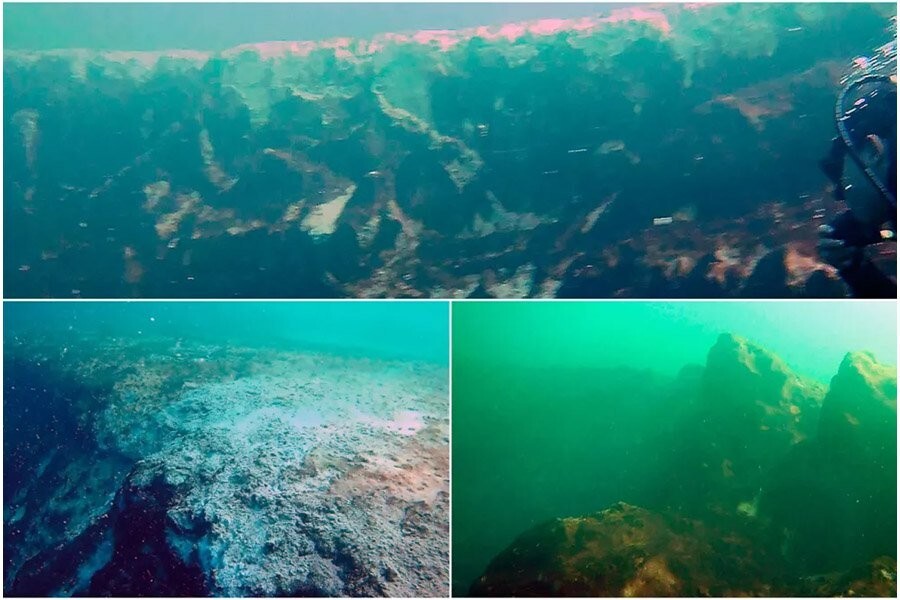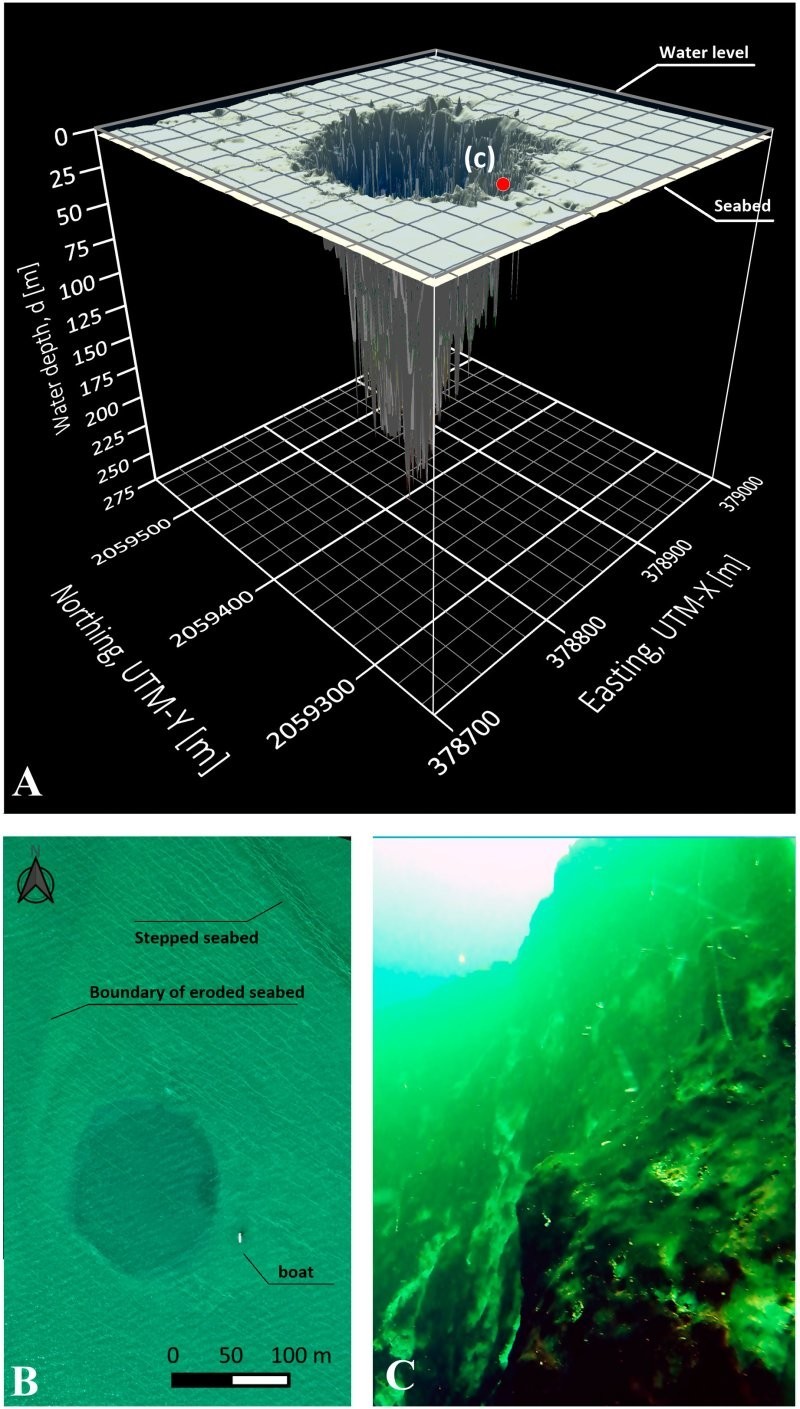The unexpected discovery of the second deepest blue hole in the world may open a window into the history of the Earth (3 photos)
Off the coast of the Yucatan Peninsula in Mexico, the second deepest blue hole in the world. Giant underwater cave located in Chetumal Bay, has a depth of about 900 feet (274 meters) and occupies an area of 147 thousand square feet (13,660 square meters). 
This is slightly less than the record set by the deepest of famous blue holes in the world - the Dragon Hole in the South China Sea, which was discovered in 2016 and is believed to have depth over 980 feet (300 m). 
Underwater images of the second deepest blue hole in the world. Image: Alcerreca-Huerta et al/Frontiers in Marine Science
Blue holes are large underwater vertical caverns or sinkholes found in coastal areas. Many of them contain a wide variety of plants and marine life, including corals, sea turtles and sharks. The one in Chetumal is called Taam Jah (Taam Ja), which in the Mayan language means "deep water", has steep slopes with slope of almost 80 degrees, and the entrance to the cave is about 15 feet (4.6 m) below sea level. Scientists from El Colegio de la Frontera Sur (Ecosur), a government research center coordinated by National Council for Science and Technology of Mexico (Conacyt), for the first time discovered this formation in 2021. The study of the find was published February 23 in the journal Frontiers in Marine Science. 
3D map showing the second deepest known blue hole in the world, which is located off the coast of the Yucatan Peninsula. Image: Alcerreca-Huerta et al/Frontiers in Marine Science
Blue holes form when sea water meets limestone. Limestone is very porous, so water easily penetrates into rock, allowing chemicals in the water to react with limestone, corroding it. Many of the blue holes in the world are probably formed during past ice ages, when repeated floods and coastal drying destroyed rocks and created voids. When about 11 thousand years ago the last ice age and the sea level rose, these caves filled with water, and some were completely submerged under water.
Since blue holes are very hard to reach, scientists have not yet had time to study many of them.
"They are largely poorly understood," Christopher G. Smith, a coastal geologist from United States Geological Survey (USGS), who studied other underwater sinkholes, but not included in recent studies.
Smith added that the unique chemical composition of sea water in blue holes suggests that they can interact with groundwater and, possibly, with aquifers - massifs rocks or sediments that hold groundwater.
Blue holes contain little oxygen, and sunlight only hits their surface. Despite these conditions, gigantic voids are teeming with life that has adapted to low oxygen content.
Blue holes are able to give an idea of what was life thousands of years ago. Researchers note that without much amount of oxygen or light fossils can be well preserved, which allows scientists to identify the remains much more qualitatively extinct species.
Blue holes can also tell us more about life on other planets. In 2012, researchers studying blue holes in Bahamas, found bacteria deep in caves where no one else lived life forms. Such discoveries may provide clues to understanding how life can exist in extreme conditions elsewhere in our solar system.






























